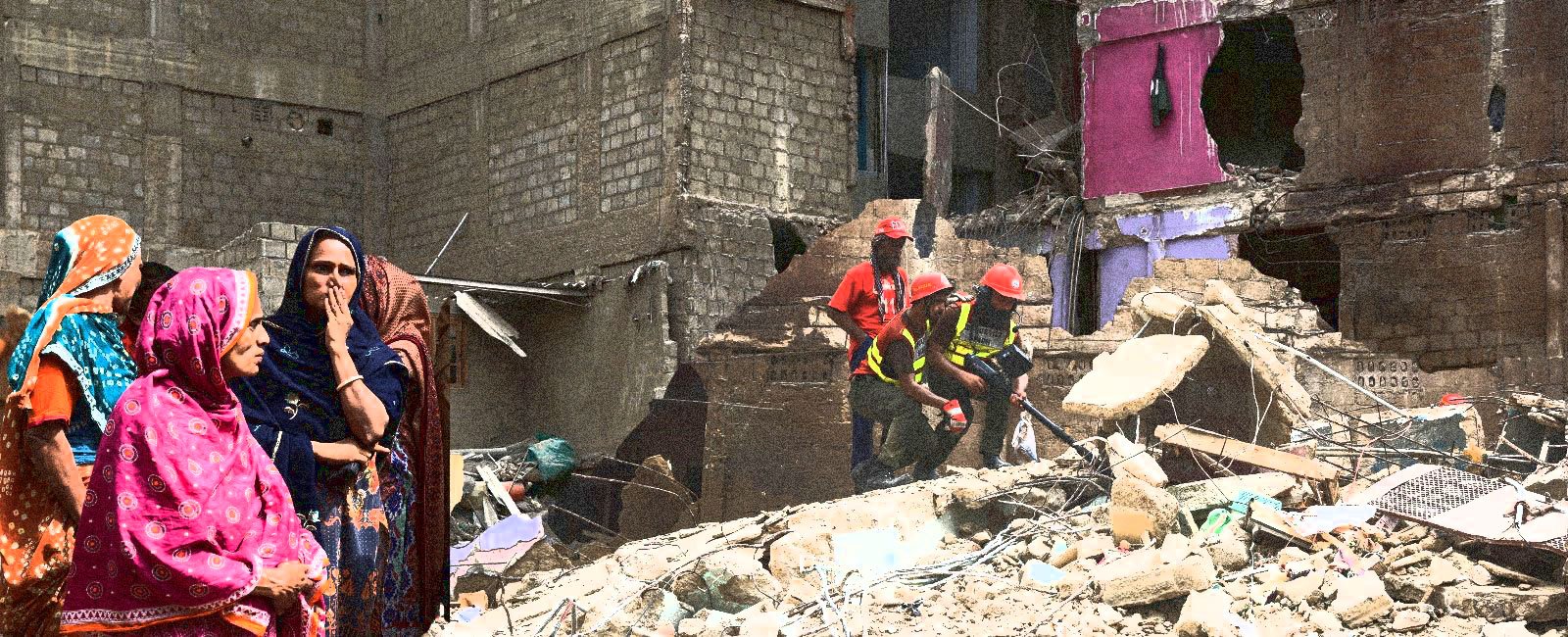How regulatory collapse buries Karachiites in concrete coffins
Demolition of Karachi's deteriorated buildings reflect govt inefficiencies which are unfairly applied to the vulnerable

Crumbling concrete buildings have become a yearly occurrence in Karachi, where people prefer undocumented contractors and thekedars over architects and engineers.
In addition, systemic neglect of professional oversight by the regulatory bodies, coupled with the city's unforgiving climate, creates a perilous environment. Thus, every year, many multi-story buildings either collapse or become uninhabitable due to their inferior construction, often exacerbated by rain and maintenance cost constraints. Yet, people continue to risk their lives in this city, where affordable housing is as scarce as clean air.
As is the norm, some officials get suspended or transferred till the weather normalises and the media gets busy with another breaking news.
Because of this disheartening lack of resolution, Karachi residents witnessed two back-to-back incidents where families lost their homes and loved ones. On July 1, 2025, a multi-storey building in Kharadar collapsed following a spell of rain. Edhi and other rescue services evacuated 22 people from the building, which was declared unfit for residents after the incident. Luckily, no lives were lost.
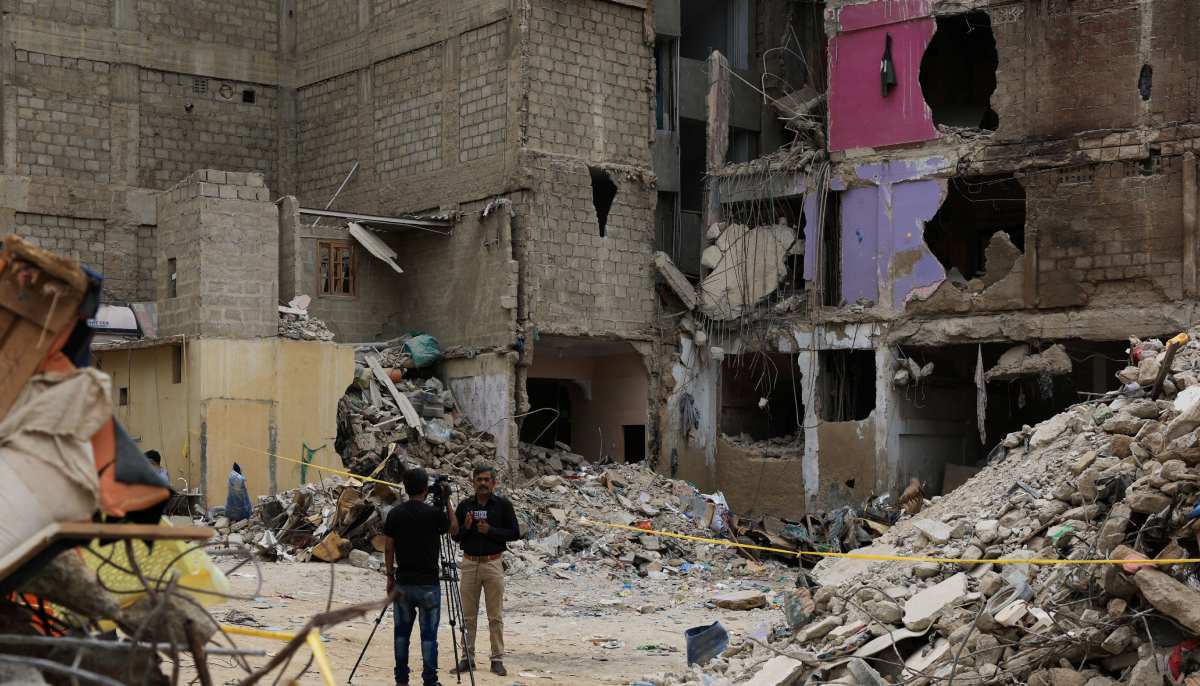
But on July 4, 2025, the residents of a building in Baghdadi were not so lucky. Rescue services reportedly recovered 27 bodies from the rubble, with 10 injured evacuees. One person remains in critical condition.
The media is awash with tragic videos of bodies, broken concrete, scarce rebar, and mounds of construction debris without trigger warnings. However, such incidents will keep recurring if the government fails to address Karachi’s multipronged housing deficit. Residents of dangerous buildings often do not comply with SBCA notices because of serious housing accessibility and affordability issues.
Housing crisis
There is a massive demand for urban low-income housing. Estimates till 2018 suggest the annual need for housing is 120,000 units, with only one-third of the demand met by the formal sector. The remaining need is met by katchi abadies, Informal Subdivision of Agricultural Land (ISALs) on urban peripheries, and densification on existing properties.
Given the lack of updated information and missing granular census data, which fails to categorise formal and informal units, the problem is not only the housing deficit, but also a deficit in the quality of documented housing. The issue of dangerous buildings cannot be addressed without fixing the housing deficit and the quality of construction. For this, all stakeholders, including the Karachi Development Authority (KDA), Sindh Local Government and Housing Town Planning, Planning & Development Department (P&D), and the Revenue Department (for land matters), need to sit together.
Housing remains one of the low-key priorities of the Sindh government on the ground. The running costs, including salary and non-salary estimates of the Sindh Housing and Town Planning department, stand at Rs2.2 billion annually. Of this, 96% or Rs2.1 billion of the budget is dedicated to the People’s Housing Cell Karachi. Despite that, not a single low-cost housing scheme has been built in Karachi for decades. In the new budget too, the Sindh government has allocated a total of Rs123.62 billion for the Local Government & Housing, Town Planning (HTP) Department in its Annual Development Programme (ADP) for FY25-26. However, the housing and town planning sector has a budget of Rs1.49 billion, dedicated to three ongoing schemes. The Sindh Building Control Authority (SBCA) is under the Sindh Housing and Town Planning Department.
SBCA’s regulatory role
The SBCA, as per the Sindh Buildings Control Ordinance (SBCO), 1979, is only a regulator. It regulates town planning and building control under the Master Plan and Environmental Control (Building & Town Planning) Regulations. It is also responsible for approving all types of building plans and structural designs in the Karachi city district.
The SBCA has a Technical Committee on Dangerous Buildings (TCDB) responsible for identifying, evaluating, and recommending necessary actions for buildings deemed dangerous or unsafe. The TCDB, empowered under Section 14 of the SBCO 1979, issues a list of dangerous buildings every year. This year, there are 578 buildings on that list from Karachi (Table 1).
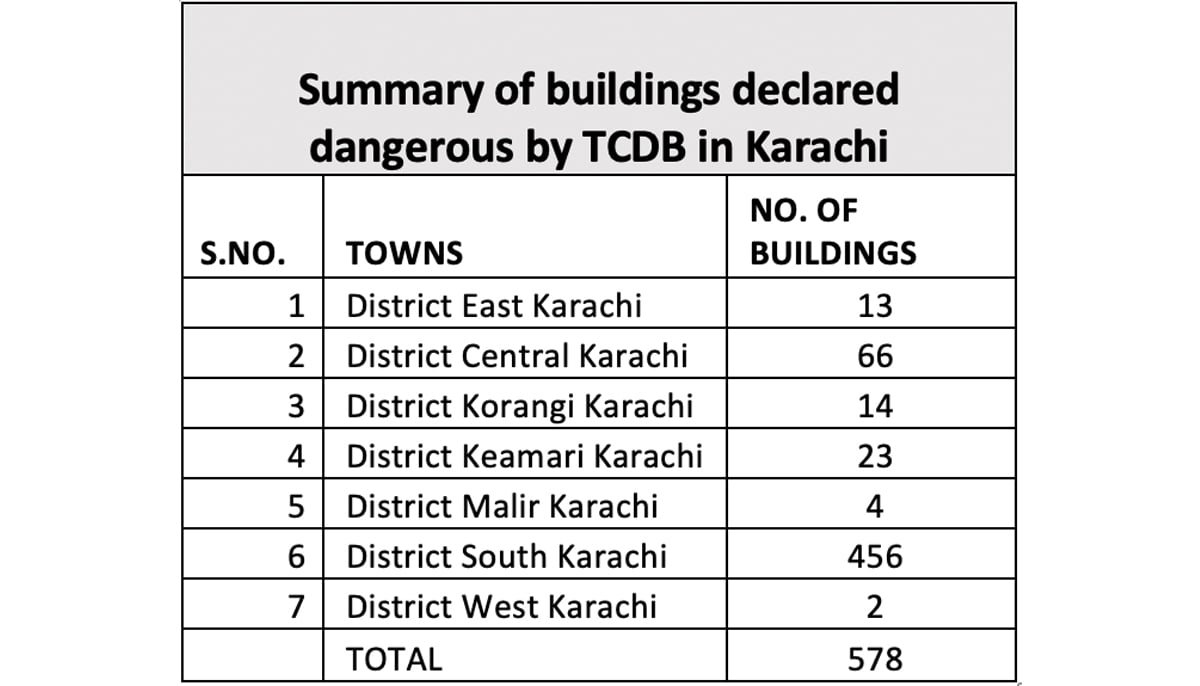
Research shows that since 2017, at least 29 buildings collapsed completely or partially, causing 123 deaths and 141 injuries in different parts of the city (Table 2). It is unclear how many of those buildings were on the TCDB’s master list. The reasons for the collapse included illegal construction, poor materials, lack of maintenance, and unchecked construction on adjacent plots. At least four British-era buildings also ended up in a heap of rubble during 2017-2025.
Corruption and systemic failure
The death toll in the recent Baghdadi incident is the same as the March 5, 2020, Gulbahar incident, where 27 people lost their lives and 16 were injured. That case concluded with the court ordering the builder, his wife, and three sons to pay diyat (blood money) worth Rs8.1 million to the victims’ heirs. However, the eight SBCA officials accused in the FIR were acquitted by the court due to the prosecution’s failure to prove the charges. This systemic failure to prosecute officials is another major hurdle in addressing the issues plaguing the city’s construction, and planning sectors.
The SBCO 1979 mandate extends beyond just regulating building plans and structural design. The SBCA also issues no-objection certificates (NOCs) to the builders and developers for the sale and advertisement of public sale projects. This includes fixing and approving unit prices, project durations, and construction specifications. It is also mandated to resolve public complaints against builders and developers regarding public sale projects within the purview of approved plans and specifications, and to act against builders for violations of approved building plans.
Furthermore, its responsibilities include identifying, declaring, and demolishing dangerous buildings within its jurisdiction, as well as taking legal action against builders and developers involved in unauthorised construction and violations of building plans or NOCs (no-objection certificates).
For all these tasks, it is understandable that the SBCA works on the Union Council level, allowing it access to construction activities on the muhallah (neighbourhood) level. However, the regulator is barely carrying out its duties, as can be witnessed by the mushrooming illegal projects and societies in the city. It is widely alleged that construction violations, encroachments, and other such acts aren’t possible without greasing the palms of government officials, whose lavish lifestyles often belie their modest salaries.
Formation of committees to investigate corruption allegations has been a knee-jerk reaction for decades. But illegal and often harmful construction activities never stop. The victim of a building that partially collapsed in North Nazimabad in April 2024 and was later demolished in November 2024, shared his first-hand account.
Speaking on condition of anonymity, he said their building was demolished after a balcony collapsed on customers outside a ground-floor medical store.
“The dangerous declaration was made back in 2020, when a 24/48-hour ejectment notice was issued to the residents. An official of the DC office also suggested a Rs1 million settlement amount to make the notice disappear,” the victim pointed out.
“We opted to engage a lawyer as the SBCA did not share any technical engineering report for declaring the building dangerous; they did not provide structural drawings of the project to one of the engineering firms from the SBCA’s approved list; and they did not offer any market-based compensation scheme or alternative residence in case of repair works,” the victim added.
Out of the 68 apartment owners, 52 sold their files below market rate to a builder recommended by local real estate agents to avoid a lengthy court battle. “The remaining families tried bargaining for a better price as the throw-away rates offered by the builder meant we could not buy anything reasonable in a project not already falling apart.
"But in 2024, all our hopes were dashed when a balcony fell due to the builder’s demolition activities."
Abdul* of the same building blamed the use of groundwater by the contractor during the construction phase in the early ‘80s. “Later, problems with the KWSC line forced us to dig a borehole. The brackish water eroded the tanks and affected the foundations, as that water travelled within the columns,” he lamented.
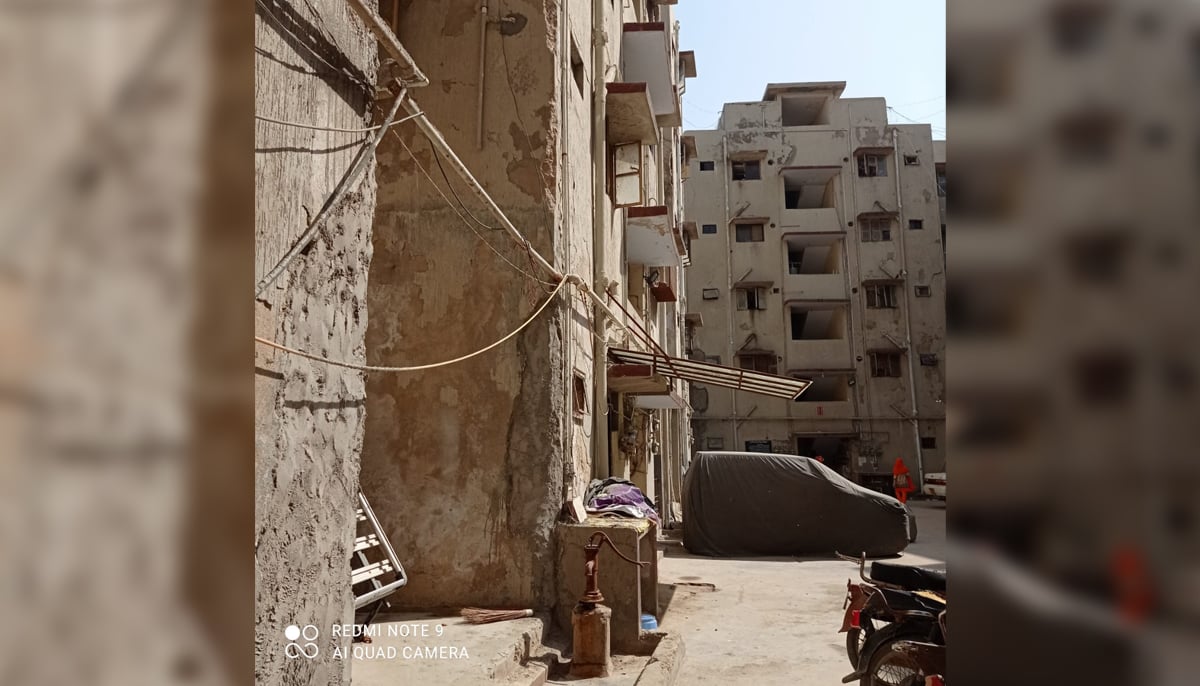
A regulatory maze
The issue of dangerous buildings in Karachi is further complicated by the varied regulatory bodies and multiple land controlling agencies. It is crucial to acknowledge that DHA and Cantonment areas fall under a separate regulatory framework managed by their respective Boards, not the SBCA. Moreover, heritage buildings declared dangerous are further dealt with by the Directorate General of Antiquities and Archaeology.
The TCDB itself is composed of nominees from several key organisations, including the Pakistan Engineering Council (PEC), Pakistan Council of Architects and Town Planners (PCATP), Karachi Development Authority (KDA), Karachi Metropolitan Corporation, and the Department of Heritage.
PCATP nominee, architect Zia Jaffrey, said the Council is a regulatory body for architects and town planners, and the major role of the TCDB is to work with the SBCA as the regulator of town planning and building control.
Jaffrey, who was nominated to the TCDB by the PCATP on May 4, 2025, has served multiple tenures in the past from 2007 to 2018. He agrees with the view that the issue of dangerous buildings is multifaceted and needs proactive measures from the government for resolution, including better policy.
Policy constraints
Residents of dangerous buildings often face legal and financial setbacks when dealing with the SBCA.
The SBCO’s Section 14 empowers SBCA to declare a building or any of its parts as dangerous and issue a notice to the owner, builder, or occupier. It can also order actions, such as immediate repair, restoration, or complete demolition of the dangerous structure. The notice can also require the evacuation of the building to prevent loss of life and property. If the builder, owner, or occupier does not comply with the SBCA notice, the SBCA can demolish the building itself and recover the cost from the owner. It can also take legal action on violations of this section.
The PCATP nominee said, “We declare a building dangerous, but people cannot just pick up their stuff and leave overnight. Most of the low-income people living in such buildings neither have an understanding of these matters, nor the means for immediate relocation.”
It is worth knowing that the SBCO 1979 has no provision that empowers the SBCA to offer compensation or alternative residences to private property owners.
Jaffrey shared the example of a multi-storey building in Agra Taj Colony, Lyari, which was already declared dangerous on April 22, 2025.
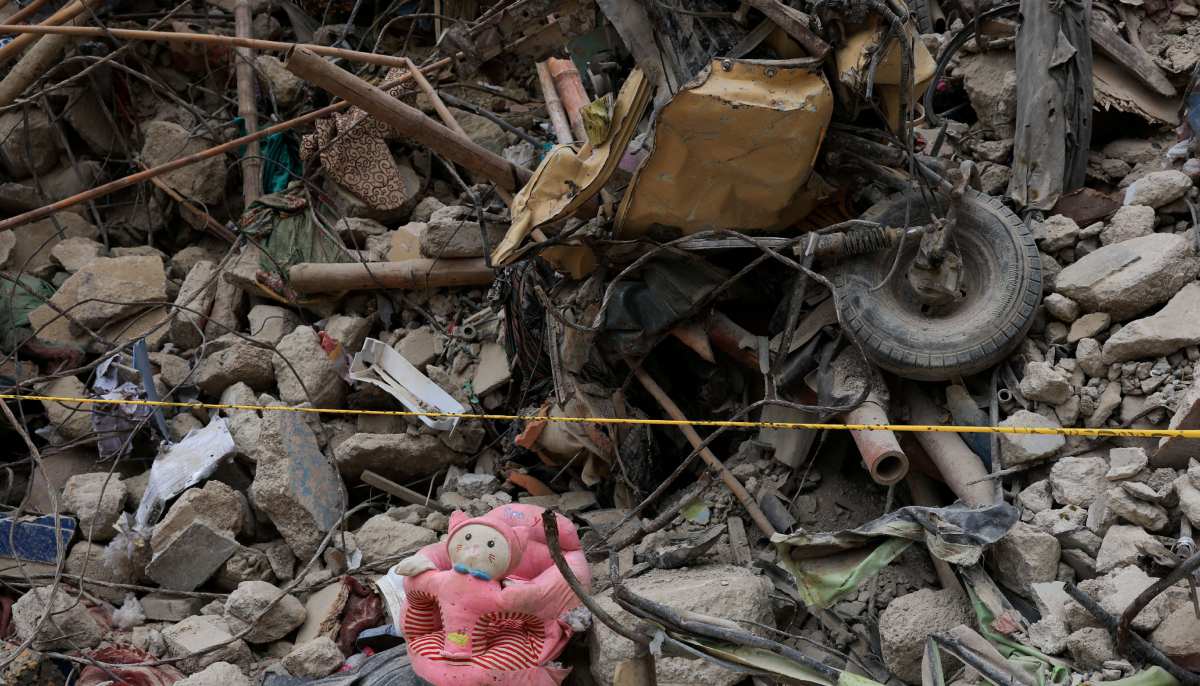
“I was urgently called to visit the building on July 6, 2025, as some more cracks and issues had developed. It was right after the Baghdadi incident.
"The building was tilting on one side, which is dangerous, and it was only a 100 square yard plot, and they had built ground plus eight floors on it with 5-6 feet projections on one side with habitable rooms.
"With only 6x12-inch columns and 18-inch depth beams, and shops on the ground floor, this 1.5-year-old building is extremely dangerous.
“If it rains heavily, it will come down because of the water,” Jaffrey explained.
He also assessed two more buildings next to the collapsed 600-yard building in Baghdadi. “Those buildings are in an extremely vulnerable shape because of pick-up columns raised from the second-floor beam with five or more storeys resting on top,” he warned.
Reports suggest that those buildings have been demolished by the SBCA.
Financial limitations
The demolition of these buildings should serve as a stark reminder of massive government inefficiencies, bureaucratic failures, gaps in policies, legal loopholes, financial disparity, and austerity measures that are unfairly applied to those most vulnerable.
Residents of dangerous and dilapidated buildings often face financial constraints in maintaining and managing their private properties. To address this situation, the government can come up with a plan with banks to provide low-interest or no-interest loans to eligible individuals. A mechanism with the SBCA’s technical committee, with representatives from the union councils, can be created in each town for inclusive representation.
For buildings posing an imminent threat, the Sindh government should provide temporary housing instead of leaving it to residents to vacate at their own convenience. And most importantly, the SBCA needs to fulfil its regulatory role as the overseer of the construction quality. The PCATP and PEC should also investigate the “stamp mafia” of professionals, who enable violations of submission and completion drawings. Licences of such individuals should be cancelled with immediate effect. As for the SBCA officials involved in aiding and abetting such practices, their permanent government jobs should be terminated without any access to pension, funds, or any other benefits.
Andaleeb Rizvi is a journalist and a former staffer at The News. She has editorial expertise on Pakistan’s economy, trade, and urban development, with academic experience in architecture and planning.
Header and thumbnail image by Geo.tv



